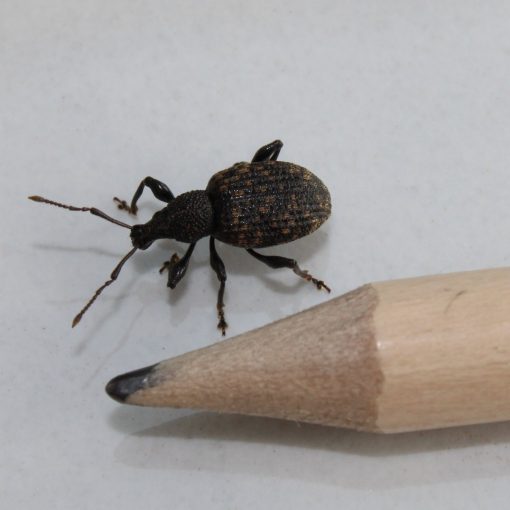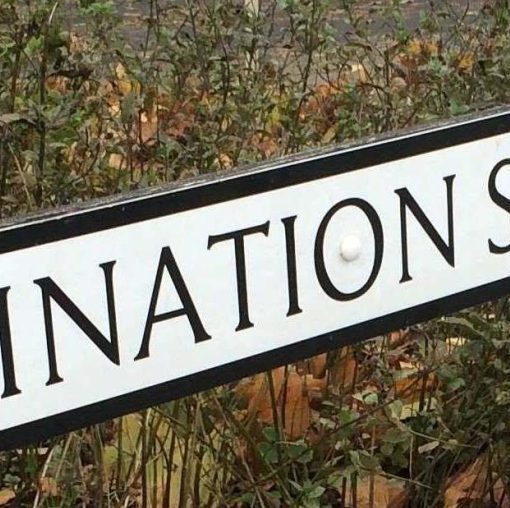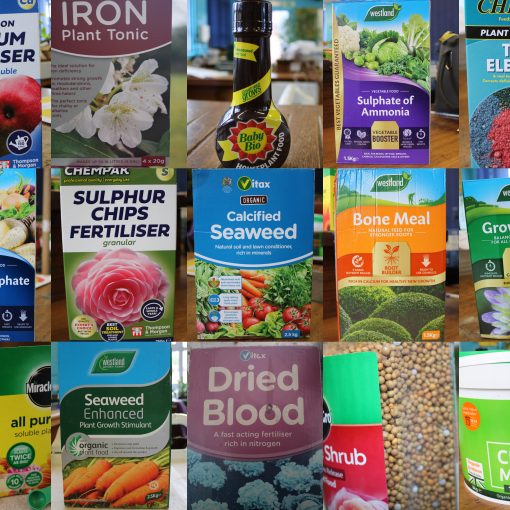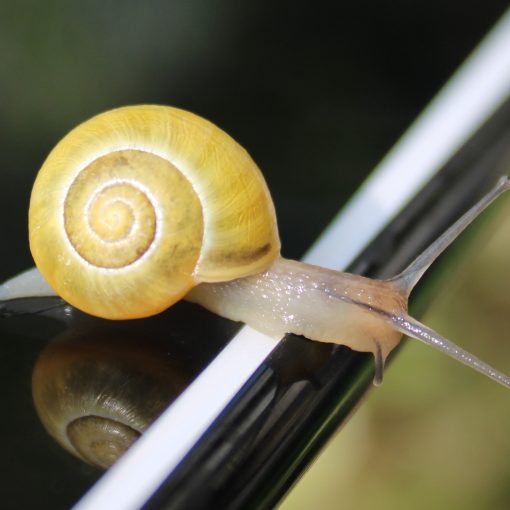The following information is an extract taken from Unit 1 Topic 2 Element 3 and focuses on the benefits of weeds.
Introduction
In domestic gardens it is the owner who decides what is classed as a weed and whether it is allowed to stay or not. But in community spaces or public gardens there are often different opinions. Councils are eager to reduce chemical use for weed control in an effort to improve biodiversity, yet some residents think weedy areas are left neglected just to save money.
In nature many ‘weeds’ are native wildflowers, and one person’s weed may be another person’s wildflower. Weeds spontaneously appear and are mostly not cultivated plants although there are some cultivated plants such as hardy annuals which may self-seed and become a weed problem if they are not wanted. Generally, a weed is a plant growing in a place where it isn’t wanted. Other accepted definitions which go into a little more detail describe weeds as:
- A plant growing in a particular situation where it is not wanted and where potentially it will be competing with cultivated plants.
- A plant that has not been planted / sown but has naturally propagated itself and is difficult to remove.
- Any plant not intentionally sown or propagated by the grower that requires management to prevent it from interfering with crop production.
As ecologists become more aware of the environmental benefits of wildflowers, gardeners are encouraged to work with nature rather than against it, using chemical control only as a last resort or better still, not at all. Gardeners have different ideas about what makes an attractive outdoor space. ‘Weedy’ wildlife gardens are sometimes seen as neglected gardens and neat weed-free gardens with striped velvety lawns may be seen as a barren wildlife wasteland by others. Also, whether a plant is a weed or not, is specific to a situation. For example, Cirsium arvense[1] (creeping thistle) in full bloom on wasteland with bees and hoverflies buzzing around, is generally accepted as a beneficial wildlife plant. Creeping thistle on a bowling green would be classed as a weed because it would definitely interfere with play.
This topic considers the benefits and disadvantages of different types of weeds in garden spaces. Cultural, physical and chemical control methods are outlined in relation to different named examples of weeds, as well as the legal control measures for particularly invasive weeds, such as Japanese knotweed. (Fallopia japonica)
The Benefits of Weeds
Cover crops
If you google ‘cover crops’ most descriptions talk about using cover crops to smother weed growth so how can weeds themselves be a cover crop? Weeds were nature’s cover crop long before humans decided what a cover crop was.
In wild areas, bare soil is not nature’s way; when a tree falls, bathing the ground in light, bare ground quickly becomes covered in green. This is nature’s way of protecting the surface of the soil from drying out, providing a sheltered habitat for ground dwelling insects and preventing soil from being washed away by rain or blown away by the wind. Heavy rain on exposed soil can also damage the surface soil structure. Cover crop roots hold the soil together, further assisting with the soil structure and promoting diversity of soil microorganisms that live in the root zone. Before mankind cultivated the land, plants we call weeds did a vital job in ecosystems: they quickly establish in, protect, and restore soil that has been left exposed.
On allotments green manures[2] are sown as cover crops instead of leaving the soil bare when crops are not growing. If annual weeds do not flower and set seed, these can also serve the same purpose as a green manure.
A range of weeds covering the soil is better than bare soil. If dug back into the soil (annual) or dug up and composted (perennial) they give back the same benefits as green manures which take much time and effort to cultivate.
In gardens a small area of wildflowers such as dandelions, daisies and clover can work as an alternative cover crop within a lawned area, and a small wild area can allow natural wildflowers (weeds) to self-seed and establish naturally.
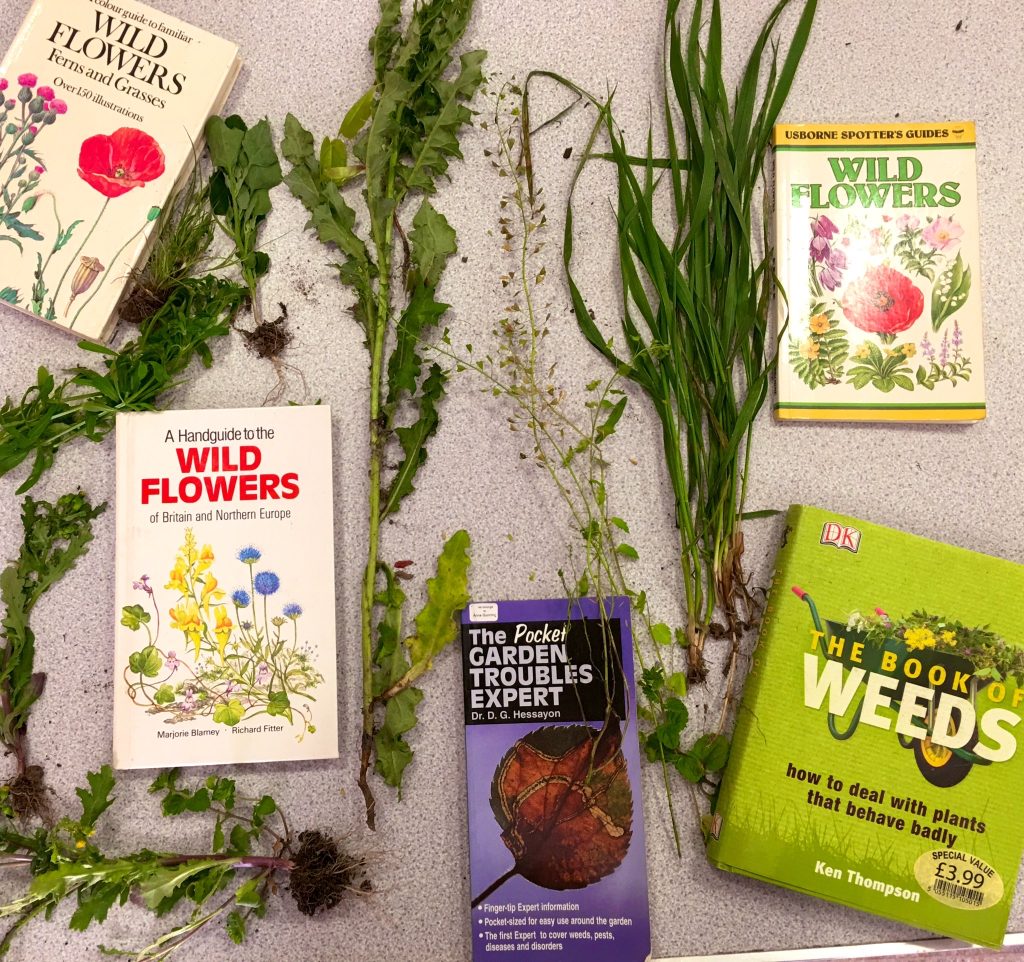

Nutrient Recyclers
As previously mentioned, green manures are planted as cover crops and one of the advantages of digging them into the soil in spring, is to recycle nutrients back into the soil.
Weeds can also help to improve the fertility of the soil. In the previous element we studied how plant nutrients are absorbed by roots and are used for building the plant structure. On bare ground, heavy winter rain can wash many nutrients in the soil downwards into the lower sub soil, making the topsoil (where most of the roots are present) infertile. This is called leaching.
Many perennial weeds have thick fleshy roots or underground stems (rhizomes) which store nutrients. Perennial weeds such as creeping thistle and broad-leaved dock have deep tap roots which can access these nutrients, storing them in their thick fleshy tap roots. These nutrients are retained until plants eventually die or until the gardener digs them up and composts them. Either way, the nutrients are recycled rather than lost to the lower soil layers. Annual weeds such as groundsel are easier to manage and are a valuable short-term store of nutrients. These can be buried in the soil before they set seed, just like a green manure, where they will rot down and return the nutrients to the upper soil layers ready for whatever is being planted next.
Some weeds are indicators of high nitrogen levels such as nettles. Because they absorb soil nitrogen and store it in their tissues, they can be used to make an organic nitrogen-rich nettle tea which can be applied as a liquid fertiliser to boost the growth of cultivated plants. Liquid teas can be made from all types of weeds, not just nettles. Chopped up dandelion roots and creeping thistle roots will soon break down and release their nutrients back into the water which can then be used in dilute form as a liquid fertiliser.
Habitats
Weeds can also include large shrubs such as Rhododendron ponticum and thickets of brambles which provide sheltered habitats for hibernating hedgehogs, amphibians, insects and nesting birds. Rhododendron ponticum is listed on Schedule 9 of the UK Wildlife and Countryside Act as an invasive, non-native species. While this does not prevent it from being sold in the UK, or from being grown in gardens, the RHS encourages those that do grow it to take great care with managing it and with disposing of unwanted material..
Low growing herbaceous weeds such as creeping buttercup provide cover for ground dwelling insects such as ground beetles slugs and springtails which in turn provide a foraging habitat for birds. Weed growth will also provide cover for small mammals such as voles as they move around foraging for food.

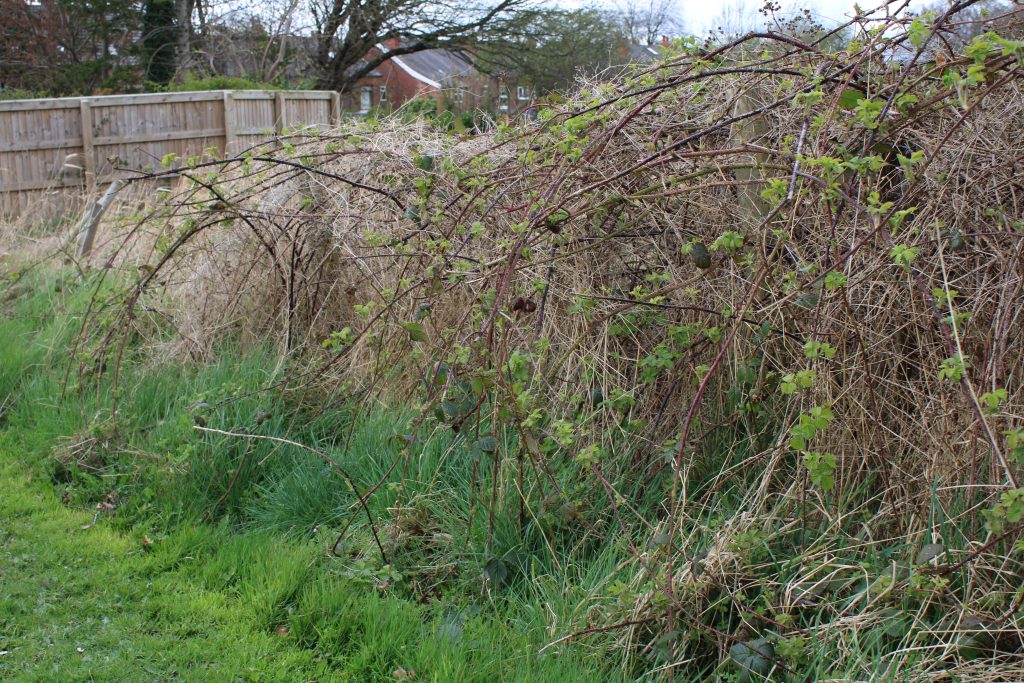
Food Sources
As well as providing foraging habitat for small mammals and birds, some weeds are Important food sources.
Weeds which flower are a source of nectar and pollen for insects. Creeping thistle attracts hoverflies, bees and butterflies. Himalayan balsam is very attractive to bees and is nectar rich.
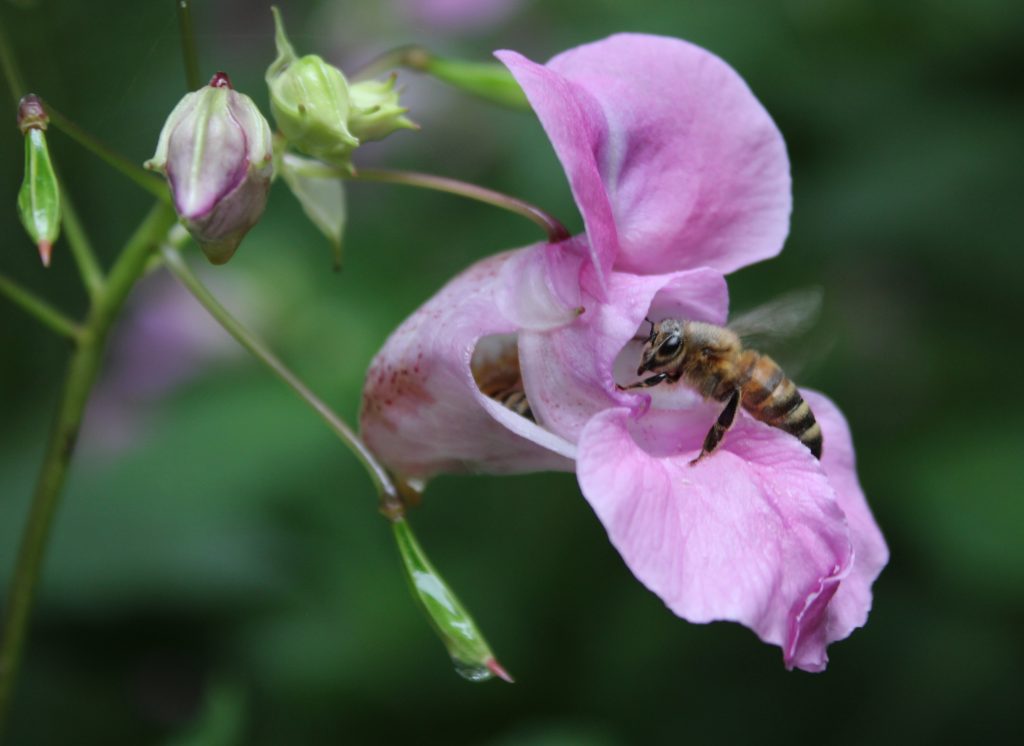
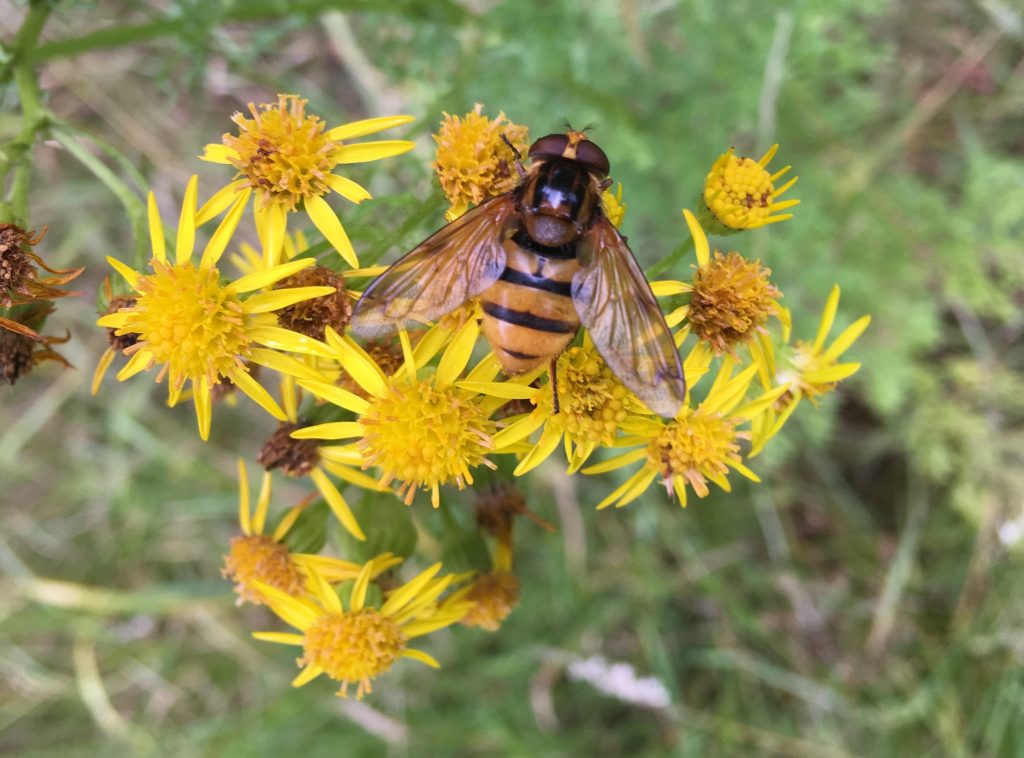
Himalayan balsam is a problem near riverbanks because it is an annual and quickly colonises areas during the growing season. When it dies with the first frosts the ground is then left exposed to winter rains which can wash soil away (erosion) as there are no roots holding the soil together.
Ragwort is an important food source for the cinnabar moth and nettles are a food source for the caterpillars of peacock, red admiral and the small tortoiseshell butterfly. The ringlet butterfly caterpillar feeds on grasses and the adult prefers bramble flowers as a nectar source.
Cardamine pratensis which is the preferred host plant for the orange tip butterfly provides flower stalks for egg laying (habitat) and foliage as a food source for the caterpillar stage of the life cycle.
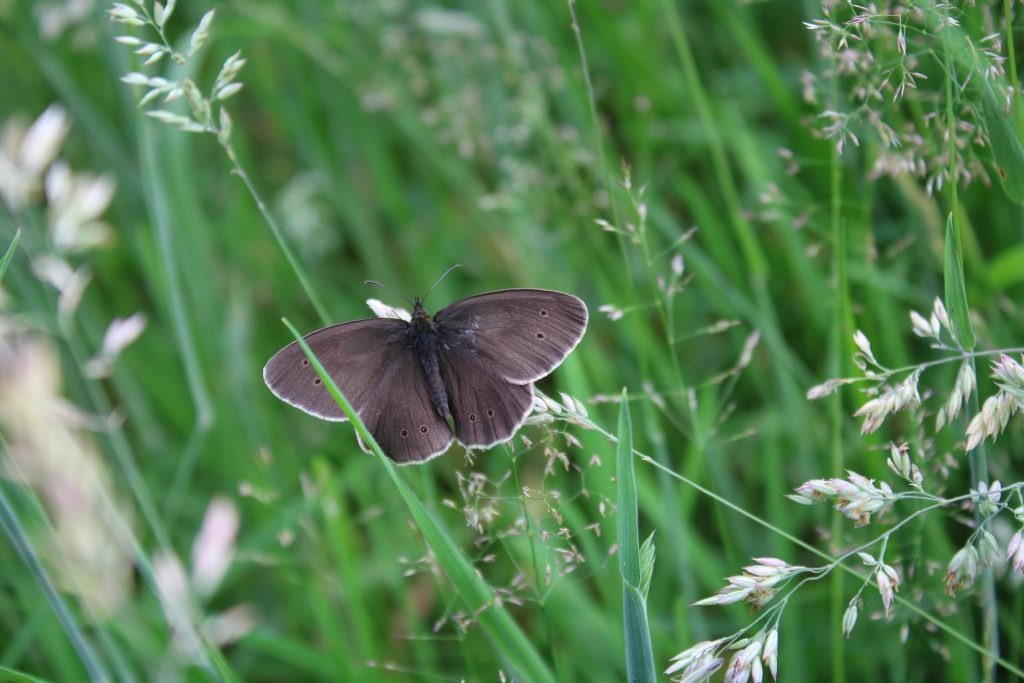
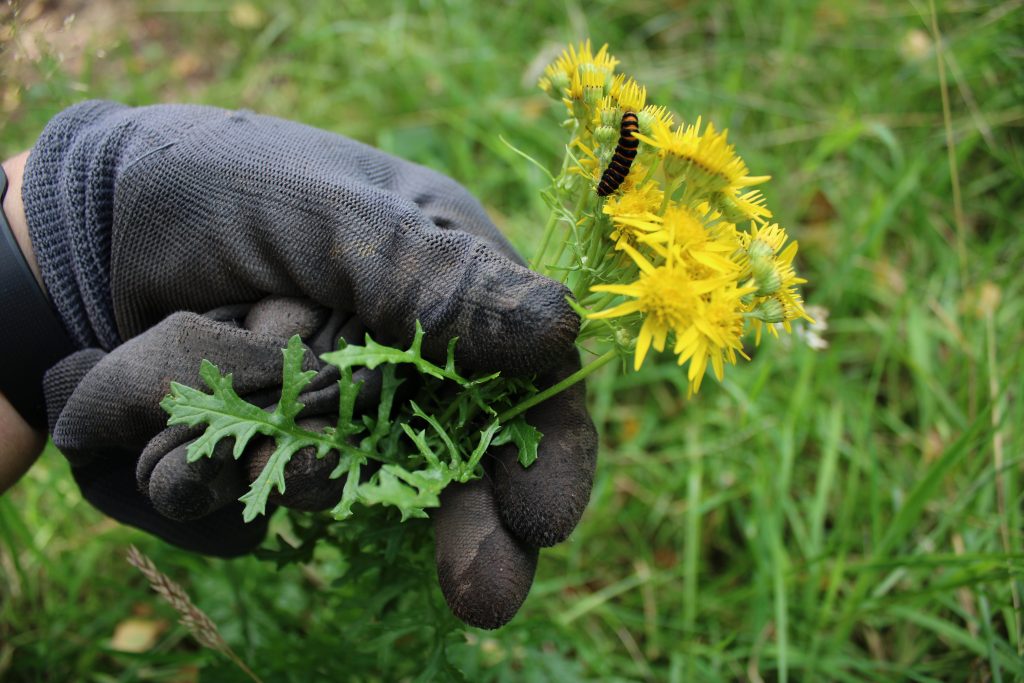
Teasel seeds are valuable nourishment for goldfinches who can be seen sitting on the top of the seed head in winter picking out the seeds. Bramble provides blackberries for a wide range of wildlife including birds and dormice.
Weeds also provide human food – wild foraging has become a popular pastime: Nettles can be made into soup, blackberries can be made into jam and dandelion roots can be roasted and used as a coffee supplement.[3]
Weeds provide a very important ecosystem service[4] for wildlife, encouraging beneficial pollinators and natural predators of ‘pests’ and are part of a healthy ecosystem.
Other Benefits of Weeds
They can be used as indicator plants. Creeping buttercup prefers poorly drained soil while chickweed and nettles indicate fertile soil. Emergence of dense flush of weed seedlings in spring, indicates the soil has warmed up sufficiently and it’s time to start sowing carrots on the allotment. A soil with no weeds in the growing season is a concern and can indicate contamination or extreme pH. As many weeds are native wild plants they have been used for centuries as herbal remedies for a variety of ailments.
[1] https://www.rhs.org.uk/plants/121159/cirsium-arvense/details
[2] https://www.rhs.org.uk/soil-composts-mulches/green-manures
[3] https://www.countryfile.com/how-to/foraging/dandelion-root-coffee/
[4] Definition of ecosystem services: These are all the process and outputs that nature provides, which directly
or indirectly benefit the quality of human life on earth.

